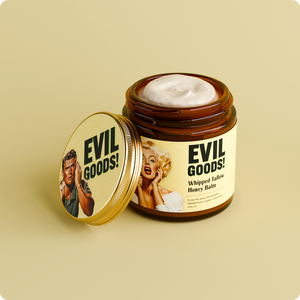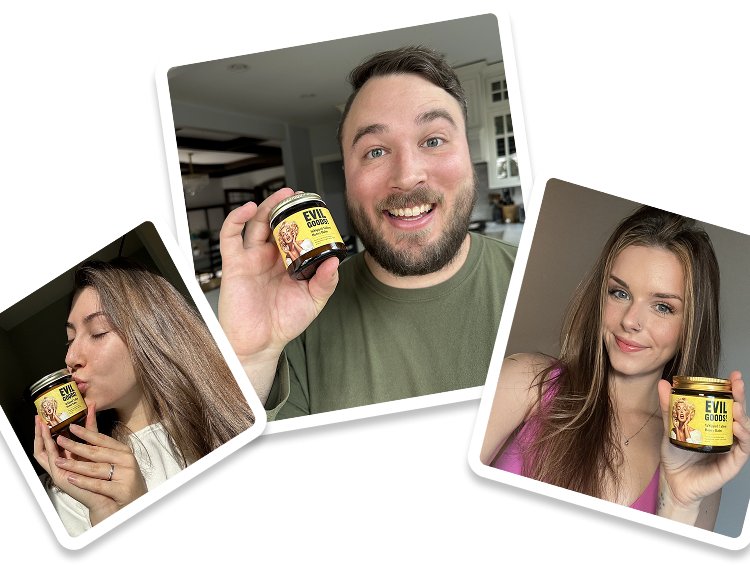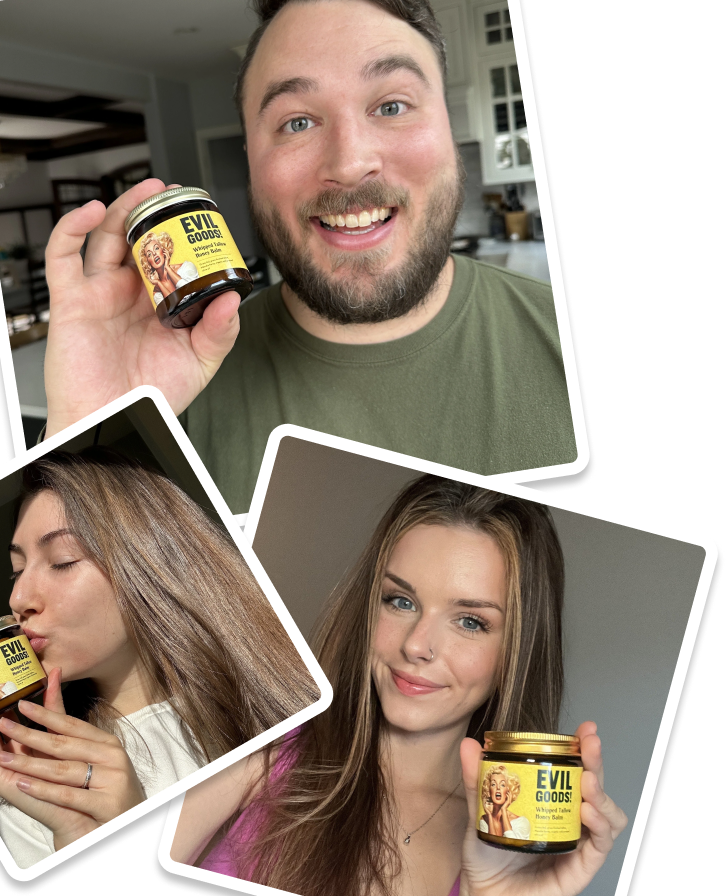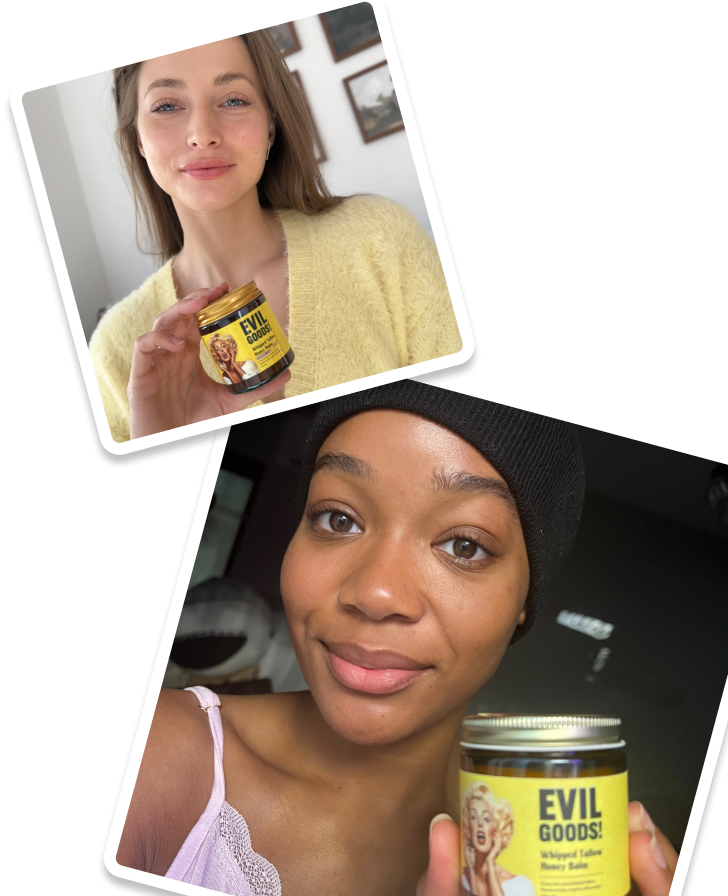Did you know that your sunscreen might be doing more harm to your skin than good? Most sunscreen products contain harmful chemical ingredients that penetrate your bloodstream and disrupt your health. These sunscreen products might have been marketed as safe, but they're toxic to your skin. You can keep your skin and body free from toxins by picking the right sunblock.
We put this guide together to walk you through the science of sun protection, explain the different types of sunscreen, and help you find the right one for you.
Understanding Sun Protection and Safe Sunscreen
It's easy to only think about sunscreen on hot days when you know you need to protect yourself from the sun. But to really keep your skin safe, it's important to understand the science of UV rays and how they work. There are two kinds of ultraviolet radiation to be aware of:
-
UVA Radiation: These rays are responsible for premature aging, like wrinkles, fine lines, and sagging, and skin cancer that develops over time. They can also penetrate through windows and are constant all year round. They contribute to long-term damage in your skin.
-
UVB Radiation: These rays are more damaging to surface skin than UVA rays and are responsible for the damage to your skin caused by direct sunlight. Because of this, they are primarily responsible for sunburn. They also contribute directly to DNA mutations that can cause various types of skin cancer, including melanoma.
To guard your skin against UVA and UVB radiation, always choose broad-spectrum sunscreens. These sunscreens will help minimize the risk of sunburn, skin irritation, and skin cancer.
Sun Protection Tips
-
Wear Sunscreen Every Day: Sunscreen should be part of your daily routine, even in winter. Make it a habit to always apply safe sunscreen before heading out.
-
Reapply Sunscreen Regularly: Try to reapply your sunscreen, particularly if you're swimming or sweating. This is because sunscreen products wear off with sweat or exposure to water. You can reapply sunscreen every 2-3 hours daily for maximum results.
-
Limit Sun Exposure: The sun's UV rays are strongest and pose the greatest risk for skin damage between the hours of 10 a.m. and 4 p.m. This period is often referred to as the "peak sun hour." For maximum protection, health organizations like the U.S. Environmental Protection Agency (EPA) and the World Health Organization (WHO) recommend seeking shade and taking extra sun protection measures during these hours.
-
Use Protective Clothing: Wear sun protection factor (SPF) clothing that covers your skin, including a wide-brimmed hat, sunglasses, and long sleeves, to minimize exposure.
-
Be aware of Reflective Materials: Remember that UV rays can bounce off of surfaces like water, snow, and sand, increasing your UV exposure and putting you at danger even in the shade. So, while you're in those places, always be extra careful.
Evil Goods Beef Tallow: The Best Safe Sunscreen For Full Protection

At Evil Goods, we're all about full transparency and real protection. That's why we’ve formulated our Beef Tallow Sunscreen with a "Zero Toxins, Zero Bullsh*t" philosophy. We believe you shouldn't have to choose between effective sun protection and your health.
Unlike synthetic sunscreens that use chemical UV filters, our formula provides broad-spectrum protection with non-nano zinc oxide, which creates a safe, physical barrier against the sun's harmful rays. We're proud to offer a product that's effective and also free of hormone-disrupting chemicals and harmful ingredients like oxybenzone and octinoxate.
Our sunscreen is made with just three ingredients: beef tallow, non-nano zinc oxide, and local botanicals. Beef tallow is a return to a time-tested skincare tradition; it's loaded with fat-soluble vitamins and is bioavailable, so it deeply nourishes and protects your skin without a greasy feel or clogged pores. It's a simple, potent formula that's safe for sensitive skin, kids, and anyone who wants to feed their skin the good stuff.
Shop our Tallow Sunscreen today.
Mineral and Chemical Sunscreens: What’s the Difference?
-
Chemical Sunscreens: Chemical sunscreens act like sponges, soaking up UV rays and turning them into heat. But several of their active compounds, such as oxybenzone and avobenzone, have been linked to skin irritation and hormonal problems. (However, research is still ongoing.) They can also hurt the ecosystem. Some chemical sunscreen compounds, such as oxybenzone and octinoxate, have also been implicated in coral reef harm, leading to their bans in places like Hawaii. The FDA has even flagged certain sunscreens for more review because their presence in the body has raised concerns about long-term use.
-
Mineral Sunscreens: These sunscreens use active ingredients like zinc oxide or titanium dioxide. These formulas are approved by the Food and Drug Administration (FDA) for broad-spectrum protection and are widely regarded as a safer choice for you and your environment.
Benefits of Mineral Sunscreens

-
Non-Toxic Protection: Mineral sunscreens use natural UV filters like zinc oxide and titanium dioxide to create a physical barrier on your skin. These filters don't let the sun's rays get in, which helps reduce the risk of irritation and keeps the sunscreen from being absorbed into your body.
-
Broad Spectrum Protection: They provide effective broad-spectrum protection, shielding against both UVA and UVB rays. This helps prevent your skin from damage, premature aging, and cancer.
-
Safe for Sensitive Skin: If you have sensitive skin, mineral sunscreens are a better choice than chemical ones because they don't irritate it as much.
-
Environmentally Friendly: Mineral sunscreens are a fantastic choice because they are considered reef-safe. They don't harm coral reefs or marine life. Unlike chemical sunscreens that can be destructive, choosing a mineral one is an easy way to protect your skin and help keep our waters healthy.
The Rise of Mineral Sunscreens
With increasing awareness of the harmful ingredients (such as oxybenzone and octinoxate) in chemical sunscreens, the use of mineral sunscreen has become common, as people seek safer alternatives.
This has resulted in the rise of safer sunscreens, those made with active ingredients like zinc oxide and titanium dioxide, which are effective at blocking the sun's harmful UV rays. Sunscreen manufacturers are now including these ingredients with consumer safety in mind.
Mineral sunscreens are now the best option for consumers looking for sun protection without the toxic chemicals commonly found in non-mineral sunscreens.
What to Look for in Safe Sunscreen Products
Sunscreen is designed to protect you from the sun's harmful effects. Therefore, when you want to choose a safe sunscreen, don't go looking for the highest SPF alone. Select one that is effective and safe for your skin. Here's a detailed breakdown of what you should consider when choosing a safe sunscreen.
Non-Toxic, Mineral-Based Ingredients
Zinc oxide or titanium oxide mineral-based sunscreens are the best way to protect yourself safely and effectively. The sunscreen you purchase should have components that are healthy for your skin. Mineral sunscreen provides physical sun protection by sitting on top of the skin and reflecting UV radiation away from your skin. Non-mineral sunscreen options absorb UV rays and convert them into heat, which is harmful to your skin. If you're not a fan of the white cast typical in many formulas, look for tinted sunscreen.
Let's talk about these ingredients in detail:
Zinc Oxide
The U.S. Food and Drug Administration (FDA) has classified zinc oxide as one of only two sunscreen ingredients that are "Generally Recognized as Safe and Effective" (GRASE). This makes it a primary choice for sensitive skin, children, and those with skin conditions like rosacea or eczema.
Zinc oxide is one of the safest UV filters available, and it works immediately after it's applied to your skin. There is no need to wait for it to be absorbed into your skin like chemical sunscreens.
Zinc oxide is also considered photostable, meaning it does not break down or lose its effectiveness when exposed to sunlight, providing long-lasting protection for your skin. It provides broad-spectrum protection against UVA and UVB rays. Zinc oxide is unique in its ability to effectively block both, which is why it is a key ingredient in most broad-spectrum mineral sunscreens. By blocking UVA and UVB rays, zinc oxide directly protects your skin from the damage that leads to photoaging (wrinkles, fine lines, and sun spots) and the development of skin cancer.
At Evil Goods, this is one of the major ingredients we use in formulating our beef tallow sunscreen.
Titanium dioxide
This is another mineral sunscreen ingredient that is similar to zinc oxide. Both ingredients provide excellent protection, but formulations with titanium dioxide are often known for a lighter texture and tend to leave less of a white cast compared to those with zinc oxide, making them more cosmetically appealing for some. Titanium dioxide is non-comedogenic (meaning it won't clog pores), non-irritating, and very gentle on the skin. This makes it a great choice for those with sensitive skin, as well as those with oily or acne-prone skin who prefer a lightweight formula. Titanium dioxide is very effective at blocking UVB rays and a portion of the shorter-wavelength UVA rays, but it does not provide as much protection against the longer-wavelength UVA rays. For this reason, many broad-spectrum mineral sunscreens combine both zinc oxide and titanium dioxide to ensure full-spectrum protection.
Broad Spectrum Protection

Not all sunscreens have the ability to protect you from the sun. Mineral sunscreen (broad-spectrum sunscreen) is essential for offering full protection against both UVA and UVB rays.
-
As we said before, UVA rays go deeper into your skin and make you look older (wrinkles, fine lines, and age spots). They can raise the risk of skin cancer, especially if you stay out in the sun for a long time.
-
UVB rays are primarily responsible for causing sunburns and direct skin damage. They are also the primary contributors to the formation of skin cancer.
Without broad-spectrum protection, your skin may be vulnerable to UVA rays, which are not as easily detected but are just as damaging over time. Make sure your sunscreen is broad-spectrum to ensure you're covered from both types of harmful radiation.
No Harmful Ingredients
Some of the common harmful chemical ingredients to avoid include:
-
Oxybenzone: This is commonly used in chemical sunscreens and has been associated with hormonal disruption and skin irritation. Studies have shown that oxybenzone can be absorbed into your bloodstream, and its prolonged use has raised concerns about its impact on human health (Matta et al., 2019).
-
Octinoxate: Another chemical sunscreen ingredient known for its potential to disrupt the endocrine system. Like oxybenzone, octinoxate can be absorbed by your skin and has also been shown to have harmful effects on the environment, especially on coral reefs.
-
Avobenzone: While effective at blocking UVA rays, avobenzone can break down when it’s exposed to sunlight and may require stabilizing agents to maintain its effectiveness. However, these stabilizers can irritate your skin and cause allergic reactions.
-
Homosalate and Octocrylene: Some of these active ingredients have been flagged as potential hormone disruptors. Octocrylene, for example, causes skin irritation and worsens UV damage, but it's also been shown to build up in the body over time with regular use, raising concerns about long-term exposure (Timmermans & Van der Valk, 2013).
Fragrance-Free Formulas
Many sunscreens contain fragrances to mask unpleasant odors, but these can easily cause skin irritation or allergic reactions. In fact, synthetic fragrance ingredients are a leading cause of contact dermatitis. If you have sensitive skin, these additional scents can make things like eczema, rosacea, or acne worse.
Many safe sunscreen products now come with no added fragrance, making them better suited for sensitive skin and individuals who are prone to skin irritation. Choosing fragrance-free sunscreens ensures that your sunscreen product is less likely to trigger irritation or an allergic reaction.
Additionally, many fragrance-free sunscreens are also free of other harmful chemicals like parabens, phthalates, and synthetic preservatives, which can cause further damage to your skin barrier and health over time.
Sunscreen Types
Spray Sunscreens
Spray sunscreens are a common choice due to their convenience, but they come with a few concerns:
-
Inhalation Risk: You can easily inhale aerosol sunscreens, which pose a risk to your lungs, especially if the sunscreen contains harmful chemicals.
-
Uneven Coverage: Spray sunscreens can be difficult to apply evenly, leading to inadequate coverage and leaving parts of your skin exposed to harmful UV radiation.
Sunscreen Lotion
Sunscreen lotions are thick, easy to apply, and offer even coverage that sticks to the skin, ensuring that you’re getting the protection you need. This is unlike spray sunscreens, which may be convenient, but they often fall short in providing adequate coverage and have raised concerns about inhalation risks.
-
Even Application: Sunscreen lotion allows for an even and thorough application, ensuring that you don’t miss any spots. When you apply it generously, it creates a physical barrier that stays intact, offering effective UV protection.
-
Long-Lasting Protection: The consistency of lotion sunscreens helps them stay on your skin for longer periods of time. This gives them an edge over aerosol sunscreens, which can easily wear off with sweating or water exposure. Properly applied sunscreen lotion provides continuous protection, making it perfect for prolonged sun exposure or activities like swimming and sports.
-
More Control Over Application: Sunscreen lotions let you manage how much you put on better. You can focus on certain parts of your body, like your face, neck, or hands, that might need more attention. This control can help you avoid putting on too much in one spot or ignoring spots that are more likely to get burned.
-
Moisturizing Benefits: Many sunscreen lotions contain moisturizing ingredients like beef tallow, olive oil, and vitamin E, which hydrate the skin while providing sun protection. This is particularly beneficial for people with dry skin or those looking to prevent sunburn and skin aging without losing skin moisture.
Sunscreen for Babies and Children
Since a child's skin is more sensitive and easily damaged by the sun, it's really important to use a sunscreen that's both safe for little ones and effective. That's why mineral sunscreens are the best choice for babies; they're gentle and won't irritate their delicate skin. Look for physical sunscreens made specifically for kids that offer broad-spectrum protection and use natural, non-irritating ingredients.
Sun Protection Beyond Sunscreen Products

Sunscreen is just one part of a complete sun protection routine. In addition to safe sunscreen, consider these sun protection measures:
-
Wear Protective Clothing: Long sleeves, wide-brimmed hats, and sunglasses are important for protecting your skin.
-
Seek Shade: Stay in the shade whenever possible, particularly during peak sun exposure hours (10 a.m. to 4 p.m.).
-
Avoid Direct Sunlight: Stay out of the sun during the hottest parts of the day to reduce your risk of skin damage.
SPF Myths: Debunking Common Sunscreen Misconceptions
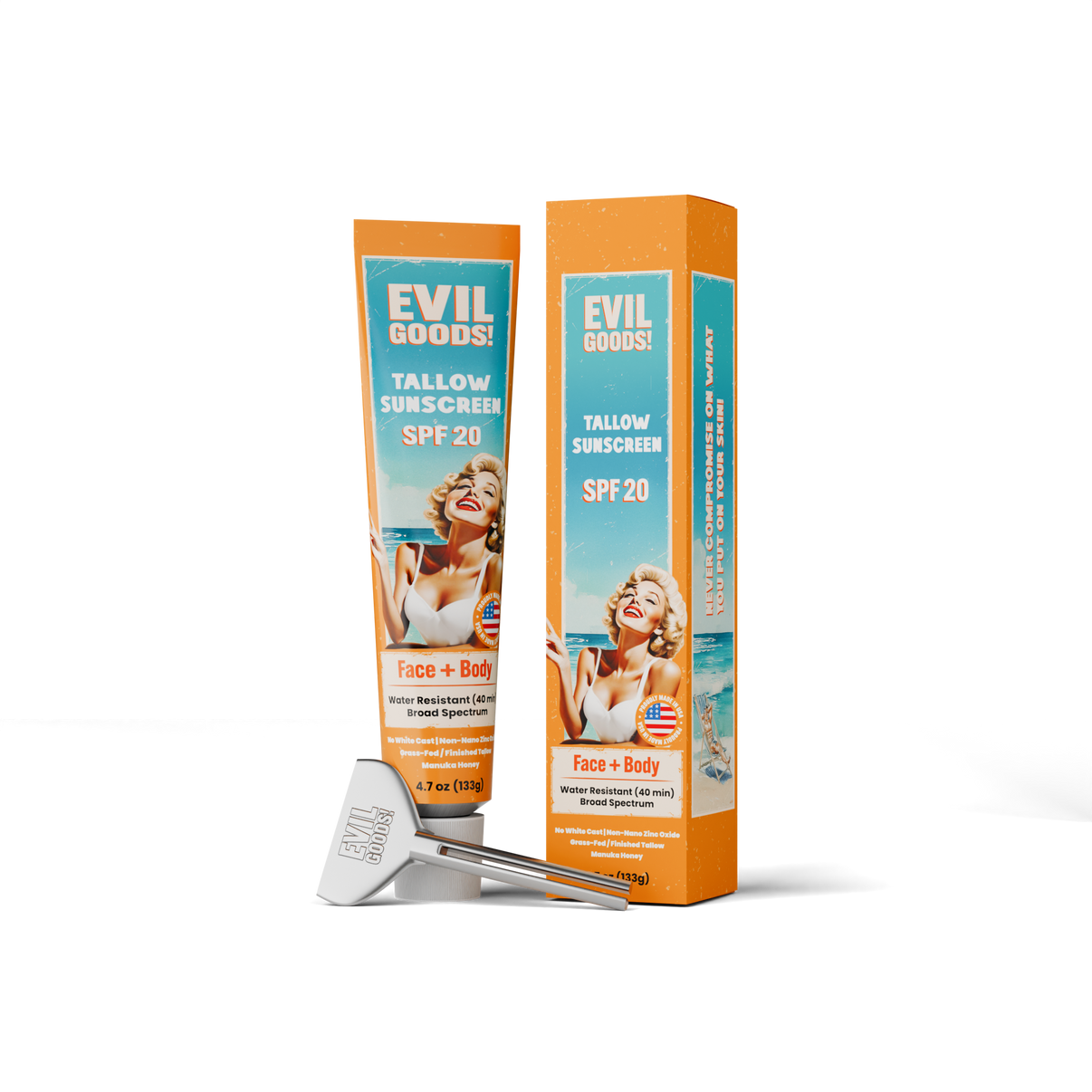
A lot of people think that greater SPF levels equal better protection. SPF 50 really only protects against 98% UVB protection, while SPF 100 only protects against 1% more. Experts say you shouldn't just rely on SPF boosters since they can make you feel safer than you really are.
The FDA and Sunscreen Regulations
U.S. sunscreen regulations are considered outdated due to the FDA's slow approval process (Crowell & Moring LLP, 2025). Such regulations have allowed chemical sunscreen ingredients that may be harmful to the skin and the environment to remain on the market. Because the FDA has been slow to update these regulations, this has left consumers in the dark about the safety of certain ingredients. The FDA's slow, drug-focused approval process has led to a market with a limited number of approved ingredients, many of which are under scrutiny, while newer, more advanced filters are widely available in other countries.
The EWG Verified Program
The Environmental Working Group (EWG) Verified program gives sunscreens a stamp of approval if they meet health and safety standards that are typically stricter than those set by the U.S. Food and Drug Administration (FDA). To get certified, a product must not have "unacceptable" substances (such as oxybenzone), have an SPF between 15 and 50, and be completely clear about what it contains.
Many people trust the program, although there is still some disagreement about it. Some dermatologists and scientists agree with EWG's call for stronger rules, but others worry that the group's "fear-based" messages may make people avoid sunscreen altogether, which is a worse, established risk for skin cancer (Leidman, 2025).
FAQs About UV Protection
Is SPF 70 Really Better Than 50?
Not really. When you look at the numbers, the difference is pretty small. You may feel like you're protected for a longer period and therefore neglect to reapply. But don't let a higher number fool you into thinking you're completely protected for longer! Sunscreens with very high SPF value can give you a false sense of security, so it's always best to reapply often. The key to effective sun protection measures is not SPF boosters, but proper use. To ensure maximum protection, remember to apply liberally, reapply, and, more importantly, seek shade.
What is the Highest Grade of Sunscreen?
The highest SPF rating for sunscreen you'll find is 100, but don't let the big number fool you. Dermatologists and health organizations agree that the extra protection it gives you over SPF 50 is minimal. The real way to stay safe isn't the number on the bottle; it's remembering to apply your sunscreen correctly and often, and to seek out shade.
Can I Still Get Tan With SPF 70?
The truth is, even an SPF of 70 isn’t a complete shield. It blocks about 98.6% of UVB rays, but a tiny bit still gets to your skin. That’s why you shouldn't just rely on the SPF number; you still need to apply and reapply your sunscreen regularly.
Which is Better for me, Sunscreen Spray or Lotion?
According to most dermatologists and health organizations, if you want to make sure your skin is completely and evenly protected, a lotion is a much more reliable choice than a spray.
Final Thoughts
Picking a safe sunscreen doesn’t have to be a complicated process. Once you understand the differences between mineral and chemical sunscreens, and know what to look for in terms of product safety and effective protection, you can make better choices for your skin and health. When you’re heading out for the day, make sure to choose the best sunscreen to get a broad-spectrum protection without any of the toxic chemicals.
Searching for premium skincare products? Discover the entire line from Evil Goods, and find something you're sure to love.
References
-
American Academy of Dermatology Association. (n.d.). Sunscreen FAQs
-
Crowell & Moring LLP. (2025). Changes in Sunscreen Regulation & Litigation are Heating Up: Updates from Congress to the Courts.
-
Leidman, L. (2025, May 30). 77% of All Sunscreen Products Fall Short of Standards, According to New Study—but Many Derms Disagree. Real Simple.
-
Matta, M. K., Florian, J., Zusterzeel, R., Pilli, N. R., Patel, V., Volpe, D. A., Yang, Y., Oh, L., Bashaw, E., Zineh, I., Sanabria, C., Kemp, S., & Godfrey, A. (2019). Effect of Sunscreen Application Under Maximal Use Conditions on Plasma Concentration of Sunscreen Active Ingredients: A Randomized Clinical Trial. JAMA, 321(21), 2082–2091.
-
Timmermans, A., & Van der Valk, P. G. M. (2013). Allergic and photoallergic contact dermatitis to octocrylene: a review. Dermatology, 226(2), 164–168.
-
World Health Organization. (2022, June 20). Radiation: The ultraviolet (UV) index.
-
U.S. Environmental Protection Agency. (n.d.). Sun safety tips
-
U.S. Food and Drug Administration. (2019). Sunscreen Drug Products for Over-the-Counter Human Use; Proposed Rule.
-
U.S. Food and Drug Administration. (2021). Questions and Answers: FDA posts deemed final order and proposed order for over-the-counter sunscreen.

Dr. Elena Dinkollari
MD, Dermatologist & Endocrinology Assistant
Doctor Approved
